All Images
News Release 14-018
NSF awards rapid response grants to study West Virginia chemical spill
Engineers to examine chemical’s fundamental properties to collect data on exposure and inform techniques for future prevention
This material is available primarily for archival purposes. Telephone numbers or other contact information may be out of date; please see current contact information at media contacts.
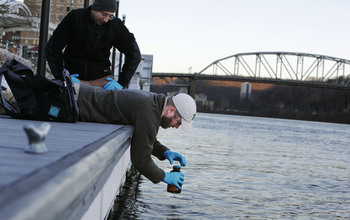
Researchers from West Virginia Water Research Institute collect soil and water samples from the Elk River in Charleston, W. Va.
Credit: Courtesy West Virginia University
Download the high-resolution JPG version of the image. (1.7 MB)
Use your mouse to right-click (Mac users may need to Ctrl-click) the link above and choose the option that will save the file or target to your computer.
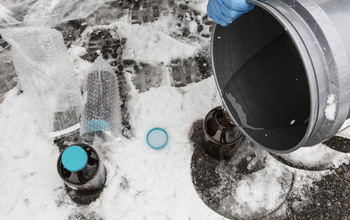
West Virginia Water Research Institute researchers collect soil and water samples from the Elk River in Charleston, W. Va.
Credit: Courtesy West Virginia University
Download the high-resolution JPG version of the image. (3.0 MB)
Use your mouse to right-click (Mac users may need to Ctrl-click) the link above and choose the option that will save the file or target to your computer.
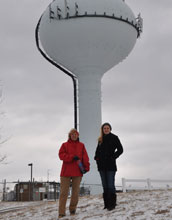
Water towers and storage tanks can be lined with polymer materials, including epoxy linings. These linings may absorb organic chemicals and then release them to later contaminate the water. When the contaminants have a detectable taste, odor or color, then consumers will avoid drinking from the tap and will rely on bottled water. The team of civil and environmental engineers from Virginia Tech studying these structures include Andrea Dietrich (left) and PhD student Amanda Sain.
Credit: Virginia Polytechnic Institute and State University
Download the high-resolution JPG version of the image. (182.0 KB)
Use your mouse to right-click (Mac users may need to Ctrl-click) the link above and choose the option that will save the file or target to your computer.
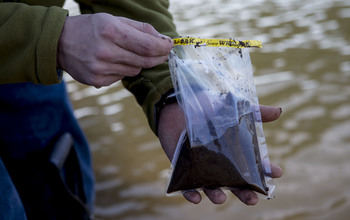
West Virginia Water Research Institute researchers collect soil and water samples from the Elk River in Charleston, W. Va.
Credit: Courtesy West Virginia University
Download the high-resolution JPG version of the image. (1.6 MB)
Use your mouse to right-click (Mac users may need to Ctrl-click) the link above and choose the option that will save the file or target to your computer.
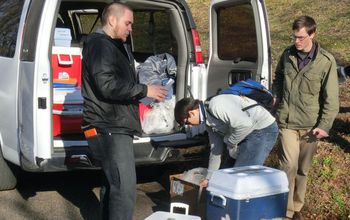
University of South Alabama students Keven Kelley (environmental engineering), Matt Connell (environmental toxicology) and Jeff Gill (environmental engineering) pack up after taking water samples at a house in Charleston, W.Va. Students and faculty were separated into two teams to maximize the number of houses tested.
Credit: Andrew Whelton, University of South Alabama
Download the high-resolution JPG version of the image. (2.2 MB)
Use your mouse to right-click (Mac users may need to Ctrl-click) the link above and choose the option that will save the file or target to your computer.
On Jan. 9, 2014, crude 4-methylcyclohexane methanol (MCHM) leaked from a storage tank near Charleston, W.Va., and bled into a river upstream of a water-treatment plant. As a result, about 15 percent of the state's residents were advised not to use the water. To better understand MCHM's fundamental chemical and physical properties and the plumbing and water-treatment systems surrounding the area, the National Science Foundation awarded Rapid Response Research grants to research teams at three universities.
Credit: NSF
Download the high-resolution PNG version of the image. (911.9 KB)
Use your mouse to right-click (Mac users may need to Ctrl-click) the link above and choose the option that will save the file or target to your computer.


